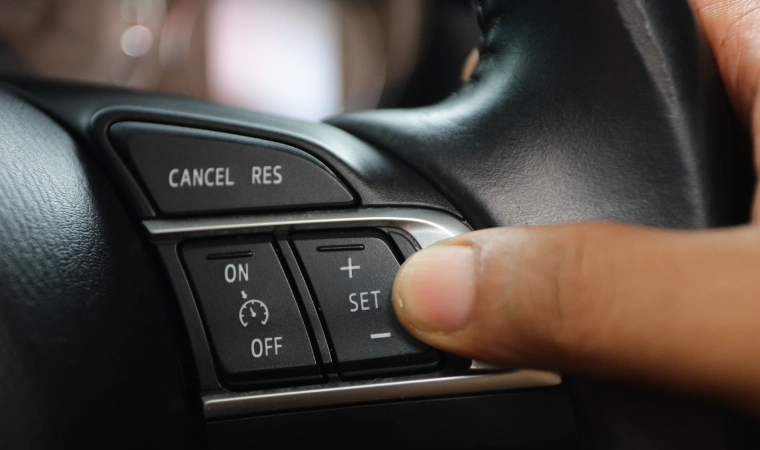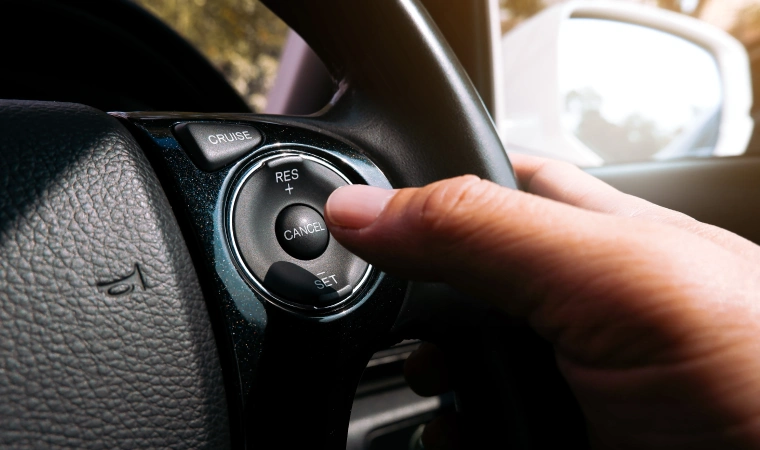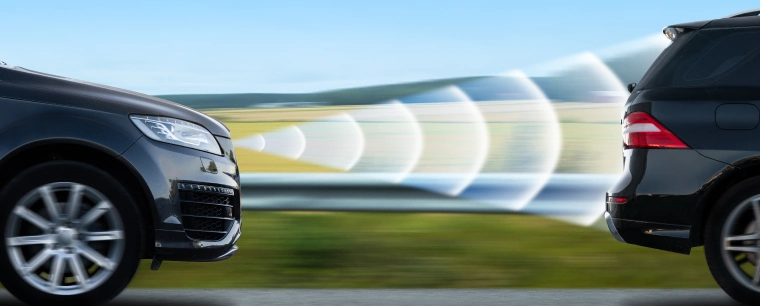What is Adaptive Cruise Control?
Published on: Monday, 06 May 2024 | Author: Jack Dreyer
As a technological innovation, cruise control has made the lives of motorists considerably easier. It’s not quite self-driving yet, we’re a long way from having completely self-controlled cars, but as a tool it does take some of the work out of your hands and allows for a more pleasant driving experience.
But what is adaptive cruise control and how does it work? Read on to find out more.
How does adaptive cruise control work?
Adaptive cruise control, active cruise control, intelligent cruise control, radar cruise control or active cruise control - it’s got a lot of different names, but they all do the same thing. For the sake of this blog we’re going to stick to active cruise control (ACC).
As a concept it’s quite simple, it is an intelligent system which allows your car to monitor its speed automatically with the traffic ahead. It paces your car, slowing it down or speeding it up based on the movement of the cars in front.
It uses radar or laser systems at the front of the car which scans the road ahead for vehicles. You switch it on and accelerate, press the “set” button, then adjust the speed manually, tweaking it with gentle presses of the + or - buttons. This then fine-tunes the speed of your car and maintains it, which is particularly useful for long stretches of road such as motorways as it will maintain the gap between you and the car in front.
If the car in front then slows down the system will tell you that you need to brake. If the car suddenly speeds up, it won’t match that car’s rapid acceleration but will maintain the set speed you have already input.
Whether the system uses radar or laser, they function the same way, but often cars will include both in order to monitor the speed of vehicles ahead whilst also covering obstacles around your car.

Cruise control vs adaptive cruise control
The original cruise control was introduced in the 1960s, which surprises a lot of people but as a system it’s relatively simple - it allows you to keep your car at a set speed without having to keep your foot on the accelerator pedal.
Adaptive cruise control, then, is the advanced version of this concept. ACC adjusts the speed according to the vehicle ahead using these laser/radar sensors and has better warning systems for sudden changes in speed - so when the car in front stops being a benchmark and suddenly becomes a potential obstacle!
Advantages and disadvantages of ACC
There are a number of advantages and disadvantages to using ACC, from saving money to quality of life benefits. We hope that over time the technology will make these advantages even more pronounced.
Advantages
The main advantage of ACC is when used on motorways and dual carriageways, but it also helps greatly in situations where there is a lot of traffic. In this way, just like standard cruise control, it makes driving a bit less taxing and means you can have a more enjoyable drive over longer distances.
Safety
ACC often uses sensors which can detect obstacles around the car and has warning signals when a car suddenly stops in front of you. Whilst convenience is a big part of adaptive cruise control, safety is its core benefit and this means you can adjust your speed appropriately, in time, to avoid collisions.
Money saving
Can adaptive cruise control save you money? Well, potentially. Stopping and starting or fluctuating speed can consume far more fuel, so staying at a steady speed could save you money in the long run. Staying at a set speed also means you’re less likely to cross the speed limit and get fines or points.
However when it comes to insurance, whilst it would make sense that ACC would, because of safety, make your insurance lower, often features aren’t taken into consideration when calculating a quote. Saying that, underwriters do take into consideration the make and model of a car so there’s a chance this could be taken into account with newer models which have better safety ratings.

Disadvantages
Firstly, we should point out that just because a driver has ACC it doesn’t mean that they are automatically better or safer drivers, which also gets considered in insurance risk-assessment. ACC doesn’t replace awareness, caution and safe driving.
Sometimes ACC can work poorly in certain weather conditions, especially fog, heavy rain or snow where the sensors are disrupted. And ACC isn’t standardised across every vehicle, so you’ll need to learn how your car’s system differs from other vehicles.
Cars with ACC tend to be more expensive, and this is something to consider if you’re interested in buying a car with this feature.
Drive safely, save money
The main purpose of adaptive cruise control is that you can drive safely whilst having more comfort, and potentially save money at the same time. However, there are plenty of other ways to do this, starting with your tyres. Regular services, maintaining fluids, checking tyres and driving safely all add up to make your car last longer, drive better and save money.
If you’re interested in getting a service then find your nearest Tyre Pros centre, or have a look at our tyres for the best fit for your car.




